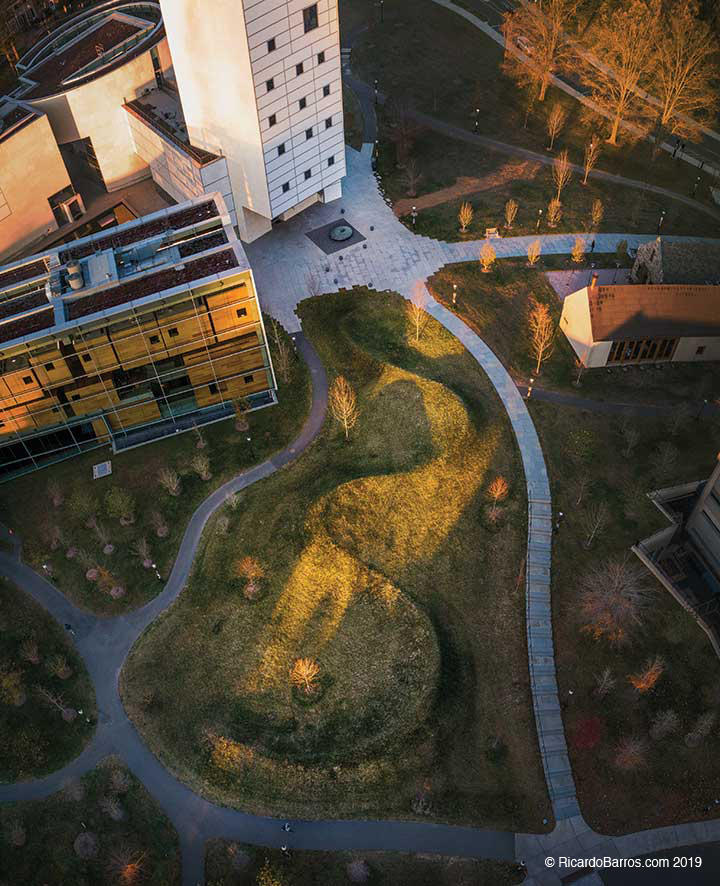On the Campus: Maya Lin’s ‘The Princeton Line’ and ‘Einstein’s Table’
There was something about the slope of land by Princeton’s Lewis Arts complex that artist and architect Maya Lin was drawn to. That location has been transformed by two public artworks that Lin created, “The Princeton Line” and “Einstein’s Table.”
The works were commissioned by the Princeton University Art Museum, and Lin discussed both in conversation with museum director James Steward Nov. 5 in a packed Richardson Auditorium.
“The Princeton Line” is one in a series of what Lin calls earth drawings, and she said she hopes the space “invites students to hang out, to sit.” She added, “‘The Princeton Line’ is about getting to know what’s going on right underfoot.”
Lin said the site probably had been used as a shortcut, saying that she naturally gravitates toward unexpected spaces.
Near the earthwork is “Einstein’s Table,” made of jet mist granite and inspired by Albert Einstein’s theory on black holes. Lin noted that the theory was validated last year during the creation of the table. Outer space and constellations were a source of inspiration for both projects, she said.
During the hourlong conversation, Lin shared details of her process from start to finish, which included many adjustments along the way. “With every artwork there might be six to eight models,” she said. “I’m always teaching myself about the site, so that I’m preparing myself for what it’s going to be like to be on site.”
Because the environment has always been important to her, working to make the space sustainable was a high priority, she said. “I started in my architecture with using recycled materials and energy-efficient materials,” Lin said. “I’ve been able to bring a much more sustainable regimen to the earthworks.” Steward noted this included using a soil mixture that promotes natural aeration.
Lin’s advice to the community to enjoy the new works? “Slow down,” in order to take it all in.
Photograph by Ricardo Barros. A video of the site can be found at ricardobarros.com/maya-lin.












No responses yet